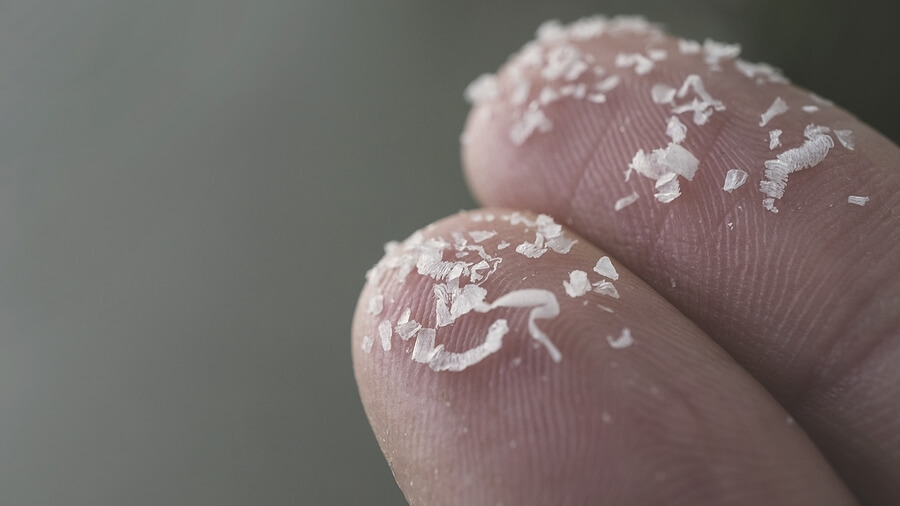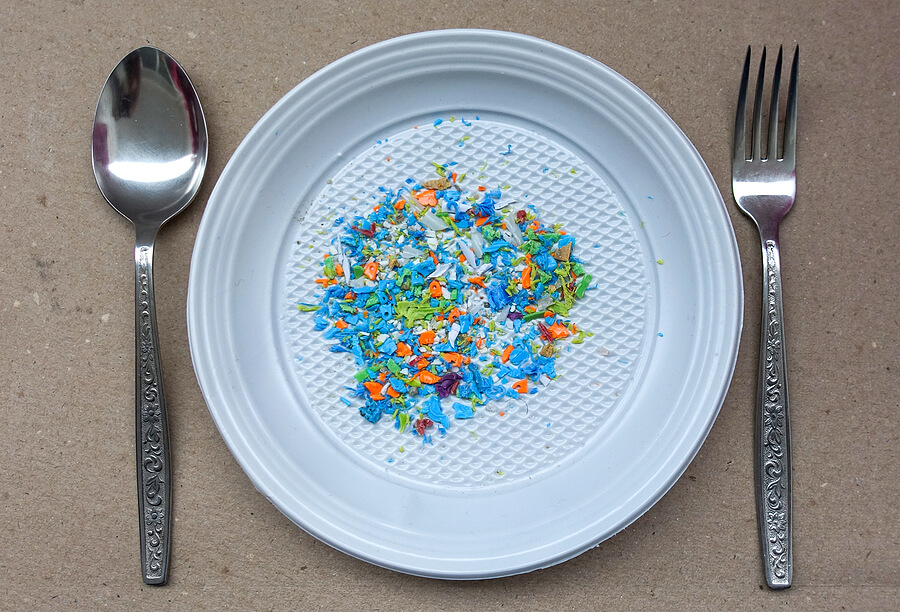You may have heard of microplastics, but did you know there’s such a thing as nanoplastics?
The tiny particles have recently been discovered by scientists at both the north and south poles, prompting climate experts to share warnings about the threat of nanoplastics to the environment.
But what are they and why are they so harmful? Read on for everything you need to know about nanoplastic pollution.
What are microplastics?
Microplastics are extremely small pieces of plastic debris, a result of the disposal and breakdown of consumer products and industrial waste.
To be considered a microplastic, the material must be less than 5mm in length, whether made small intentionally or as a result of breaking away from a larger piece of plastic.
Microplastics are a pollutant, and their toxic makeup is harmful to the environment and animal health. Some microplastics carry carcinogenic or mutagenic chemicals, which have been linked to cancer and DNA damage in humans.
Plastic degrades incredibly slowly (often over hundreds of thousands of years), making microplastics troublesome to dispose of after detection. It’s currently estimated there are around 24.4 trillion pieces of microplastics in the world’s upper oceans – the equivalent of roughly 30 billion 500ml plastic water bottles.
What are nanoplastics?
Nanoplastics have a similar definition to microplastics, the key difference being the size of the particle.
Nanoplastics are tiny, almost undetectable, pieces of plastic that are a result of the disposal of plastic products. They are usually discussed in reference to debris and pollution, especially within a marine environment, where they are most prevalent.
Micro and nanoplastics are used as abrasive agents for exfoliation in personal care products – items such as face and body scrubs and masks, with some also being manufactured for cheap filling material. However, most nanoplastics are a result of the slow fragmentation of plastic debris in the environment.
How big are nanoparticles?
Nanoplastics usually measure between 0.001 – 0.1 μm in size. They are not visible to the naked eye or even under a simple microscope, making them extremely difficult to detect.
Where are nanoplastics found?

Scientists recently discovered microscopic evidence of nanoplastics at both the north and south poles, with higher concentrations in Greenland ice.
Due to their small size, our understanding of nanoplastics remains limited. However, their presence in uninhabited, far-flung areas of the globe suggests nanoplastics pollution may present a bigger problem than first estimated.
Several studies have detected nanoplastics in the North Atlantic, remote lakes in Sweden, Siberia and Russia, and even in snow in the Austrian Alps. Worryingly, most of these places have few or no people, suggesting nanoparticles are spreading in a different, less easily managed manner.
How are nanoplastics spread?
When plastic is mismanaged and exposed to the sun, wind, or water, the item breaks down and micro or nanoplastics are formed.
As these particles are so light, and because of their widespread detection, scientists now suspect nanoplastics have been partly spread around the globe on air currents. Early studies also suggest they could be emitted from secondary sources such as urban surfaces and soils.
Nanoplastics are also easily spread through the food chain. When a plastic item, such as a fishing net, breaks down in fish-inhabited seas and lakes, the organisms ingest the particles. Many of us then consume fish or seafood, meaning we ingest microplastics in water when we eat.
Newer evidence suggests we are even breathing in nanoplastics – it’s been estimated humans ingest tens of thousands to millions of microplastic particles every year, and they’ve also been found in the placentas of unborn babies. Recent studies also concluded that these tiny particles are damaging our cells.
Why are nanoplastics bad?

When released into the environment, nanoplastics impact and alter every part of our ecosystem, with devastating effects.
Plastics are made up of various complicated chemicals – great for their malleable nature, but not so great for human and animal health.
Polyethene – used for plastic bags and packaging – is the most common type of microplastic found in the environment, and PET – used for plastic bottles – is also regularly discovered.
Early toxicological studies on humans have provided evidence of the adverse effects of nanoplastics on cell viability. Studies on marine life have shown that ingesting microplastics can affect growth and delay development. Malformations and subcellar changes have also been spotted.
How to avoid microplastics
Due to the tiny size and presence in most everyday items, it’s impossible to completely avoid micro and nanoplastics. However, you can pick your products and food items carefully to ensure you are contributing less to nanoplastic pollution and protecting your health.
No bottled water
Many microplastics are the result of plastic water bottles breaking down in the environment. Reduce your impact by limiting your use of them and invest in a metallic water bottle instead. Carry your own water when out and about – most cafes and restaurants will provide water refills for free, so you won’t be left thirsty.
Buy a water filter
While it’s relatively unknown how many nanoplastics are in our drinking water, emerging evidence suggests the amount could be much higher than initially thought. Water filters could help to reduce your intake of harmful microplastics, however, be sure to choose an eco-friendly brand – some water filter cartridges are hard to dispose of and bad for the environment.
Don’t microwave food in plastic
The chemicals found in plastic leach much more easily when heated – this includes plastic Tupperware, takeaway boxes, lids as well as premade meals that get microwaved in the package. To avoid ingesting any harmful microplastics, transfer food to a ceramic or glass container instead.
Change your laundry routine
Most clothing is now made up of nylon, polyester, acrylic and other synthetic materials. While this ensures they are versatile and affordable, these items can release hundreds of thousands of microplastics per wash.
Installing a fibre-catching filter in your washing machine can reduce the number of fibres in the wastewater by up to 80%, meaning fewer are likely to enter the ocean. If you can’t install a filter, microfibre laundry bags are another alternative – these don’t disintegrate when washed and help trap the microplastics.
Use plastic-free beauty products
The use of microbeads – visible plastic particles normal found in exfoliation products – in rinse-off cosmetics was banned in 2015, however, many beauty companies have found ways around the rules. Be sure to check the ingredients list for any plastic particles, looking for phrases like acrylate copolymer and others. Instead, opt for natural products with biodegradable alternatives to microbeads. Beat the Microbead also has a handy product search tool to help you quickly check brands while shopping.
